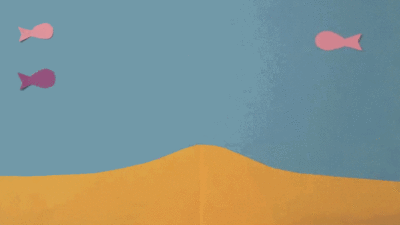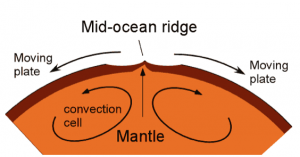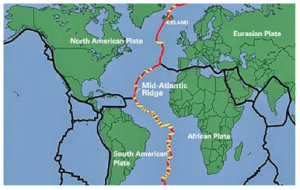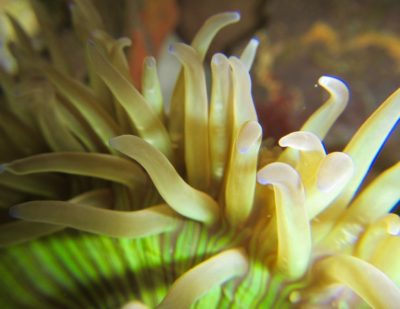
When you think about oceanography, what do you imagine? You probably think about whales, fish, dolphins, sharks, coral reefs, hurricanes, or even typhoons, perhaps. However, there is much more to the ocean than that. It is so vast! There are four aspects of the ocean to consider: Biological, Chemical, Physical, and Geological, and each field is interconnected. Sea floor spreading falls under geological. This encompasses the history and the structure of the ocean floor, which involves coastal areas, sediment, and the chemical processes that create the sea floor.
Earth is made-up of twelve predominant plates and there are two types. They are the continental and oceanic plates. The video above demonstrates how when two oceanic plates diverge (a divergent boundary), they create new sediment. As the two plates part, the hot liquid magma from the Earths mantle seeps to the surface cooling and solidifying this organic material as it comes into contact with cold water. The smoke is due to the reaction that occurs during the cooling. This process is called lithification. The temperature around this volcanic activity can reach up to 300 degrees Celsius. Believe it or not, but life exists under these conditions. How cool is that!

You can find this type of boundary in the middle of the Atlantic Ocean; it is called the Mid-Atlantic Ridge. Along the ridge lie mountains beyond mountains, the majority of it unexplored. This is just one topic on oceanography out of many others! Click on the link below to learn more.

Cite:
http://oceanexplorer.noaa.gov/explorations/05galapagos/background/mid_ocean_ridge/mid_ocean_ridge.html
http://www.livescience.com/29737-new-deep-sea-vents-discovered-atlantic-ocean.html
http://www.people.vcu.edu/~rgowdy/astro/image/seaspread.gif
http://3.bp.blogspot.com/-BBIzfCFg4n4/UkWD5MC0L_I/AAAAAAAAAKI/wqhY5yP4yQo/s1600/4_3_1_0_main.jpg


